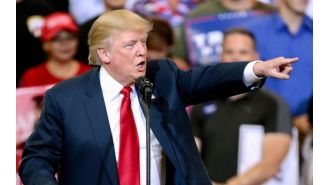The Texas Stock Exchange
The creation of a new “CEO friendly” and “un-woke” stock exchange to challenge the New York Stock Exchange and the NASDAQ has been festering for some time, but TXSE Group recently announced publicly its plans to apply to the United States Securities and Exchange Commission for permission to operate a stock exchange in Dallas with a launch date in 2026.
The United States formerly had a number of regional stock exchanges, but since 2000 most of those regional exchanges have been bought up or merged with the NYSE or NASDAQ. The Texas Stock Exchange (founding CEO James Lee, E&Y Entrepreneur of the Year 2001, President Houston Symphony Endowment, financial advisory guy, a financial player, nobody’s huckleberry) would be a new entrant in what had been a collapsing industry.
Do these Texans have any bloody capital, Big Red Car?
Yes, dear reader, the TXSE Group has raised an initial round of $120MM from heavyweights like BlackRock (no space between Black and Rock, y’all) and Citadel. There are 24 similar investors in the initial round.
Money will likely not be the problem. The BlackRock involvement is worthy of note.
What makes TXSE different, Big Red Car?
Ahhh, yes, the big question. Let’s chat about that for a second.
1. The NYSE and NASDAQ have become exceedingly expensive and dictatorial (work arrogant into the convo) with high costs, restrictions and regulations — such as the requirement for NASDAQ companies to have a certain diversity on their boards of directors and increasing fees for data access.
Opposition to these recently enacted requirements — both ESG (environmental, social, governance) and DEI (diversity, equity, inclusion) — are part of the backlash against wokeness that is gaining steam in the country.
Texas is likely the most unwoke state in the US. You agree? The TXSE is going to be the “unwoke” stock exchange.
2. New York City is just a damn expensive place to do business. The TXSE will be headquartered in Dallas (yes, you can stay at a Holiday Inn Express in Dallas). It will be a completely digital exchange using the most modern technology to control cost and drive efficiency.
New York State is threatening to impose a state financial transactions fee and this is a real irritant to the financial community. (Straw, camel, back, etc.)
Hostile + expensive = let’s move to Dallas?
3. Dallas — 24 Fortune 500 companies and a Federal Reserve Bank — is #2 to only Wall Street in the number of finance industry jobs. Wall Street has about 800,000 finance workers whilst Dallas has about half that number. That is the situation today, but the gap is closing and it will close faster as jobs are moved from Wall Street to Dallas.
That Dallas worker is making on average $102,000 annually (with no state income tax) and the Wall Street worker is costing 40% more.
Take into account the cost of doing business for a Dallas worker v a New York worker and it will be much easier to attract talent to Dallas.
4. You cannot discuss a move of the center of mass from New York to Dallas without acknowledging the massive savings in cost of operations. Everything in Dallas is cheaper than everything in New York.
5. There is already a huge investment in financial infrastructure in Texas by Wall Street firms in Dallas — tens of thousands of jobs.
Goldman Sachs is building a $500MM campus to employ 5,000 in Victory Park in Dallas. The site will allow Goldman to expand by a factor of 4-5X. This Goldman move is a bell cow sort of thing and it is the first wave of transition. Once Goldman is open for business in Texas, there will be a flood of similar activity.
Charles Schwab (just like Tesla) — $7T in AUM (assets under management) — relocated its headquarters from San Francisco to the Dallas area in 2020 after it closed its TD Ameritrade acquisition. They built a campus of 1.1MM SF to house their “small” shop. This also means Charles Schwab will no longer be paying California state income taxes. That can’t be insignificant.
Wells Fargo is expanding into a $500MM campus in Irving (12 miles from Dallas) that will initially house 3,000 workers.
Bank of America is building a 30-story high rise office building.
6. Dallas (central time zone) is an excellent central location in the US with a great international airport. Location and time zone implications are better than New York.
What will the TXSE do, Big Red Car?
The TXSE will do exactly the same things as Wall Street, the NYSE, and NASDAQ. It will embrace initial public offerings, trade stocks, bonds, ETFs, mutual funds, and other equity instruments. They will do it electronically, digital, less expensively and faster. This exchange will be “new” digital with no legacy hardware or software friction.
As this basic unit of commerce gains traction, other financial services — talking to you investment banking, wealth management, hedge funds, brokerages — will follow suit.
Is there a market for this, Big Red Car?
Excellent question. Here are some grim and good facts:
1. Today the NYSE has about half as many company listings (3,700 companies) as it did about 30 years ago. Public companies — the number of them listed — is not growing right now.
2. A good many companies that might have been public in past times are now privately held with a large portion of them in the hands of non-reporting (non-US SEC reporting) private equity funds.
It would not be unreasonable to expect some of these companies to become public as part of their investment exit strategy. This may be a critical element in new listings for the TXSE.
3. It will be hard as Hell to get a public company to abandon the NYSE or the NASDAQ even though both of those exchanges are increasing fees, promoting ESG, and embracing DEI and located in nasty old New York.
In the past, a company might be listed on the NYSE and the regional Philadelphia (first stock exchange in the US), San Francisco, Chicago, or Boston exchanges. Once upon a time before hardcore digital trading, an investor could mine a small price arbitrage difference between the NYSE quote and the regional exchange quote.
4. New York is imploding — bad government, crime, homelessness, dirty, and expensive. Clearly, there is a backlash against New York. Couple that with the ham handed arrogance of the NYSE and NASDAQ and there could be a flight of listings to the TXSE.
5. Growth in Texas is incredible. In the last decade, about 10,000 companies (going concerns) relocated to Texas. The income tax environment is a huge lure, but so is the low regulatory friction and the favorable business climate.
6. The TXSE has said it will focus on the growth dynamic in the southeast corner of the United States from Texas to Florida. That will be a very target rich environment for companies.
7. Do not expect the NYSE and NASDAQ to ignore the TXSE or to take this lying down. No, no, no. They will throw some sharp elbows and compete.
A note about BlackRock
BlackRock is one of the founding investors in the TXSE; they are also one of the largest ESG and DEI and anti-gun panderers. At the same time, they have resolutely refused to divest any of their energy holdings much to the anger of the lefties who drive ESG and DEI.
They are hostile toward oil and gas, but they own oil and gas company stock. They’re a contradiction in their own heads.
Recently, the Texas Permanent School Fund withdrew $8.5B from BlackRock’s management. There is more to this story, but suffice it to say that BlackRock is no Texas booster and Texas is not in love with BlackRock.
This is just a curious note to me.
Bottom line it, Big Red Car, half price catfish today
OK, fine, dear reader.
I think the backlash against the NYSE and NASDAQ because of their rising costs, suffocating restrictions, and woke regulations is finally coming into reality.
That reality is, in part, the creation of the TXSE, a “CEO friendly” and “un-woke” exchange to do exactly what the NYSE and NASDAQ do, but more efficiently, less expensively, with less regulatory friction, and a good dose of Texas friendly.
The people behind it are savvy and well funded.
It is going to be hard to displace the NYSE and the NASDAQ’s stranglehold on their member companies and they will not go calmly into that dark night.
Game on, y’all! Hook ’em, Horns.







